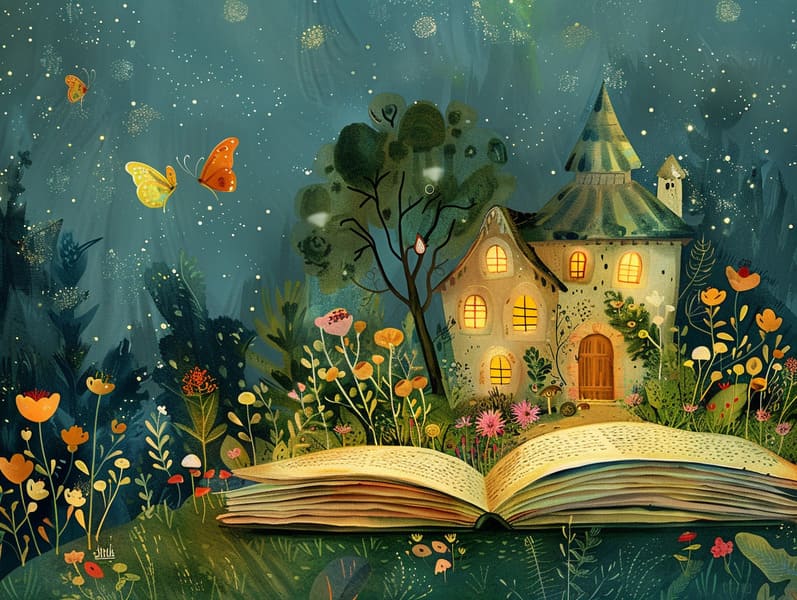The Creation of Best Fairy Tales and the Persistent Delight.
The Creation of Best Fairy Tales and the Persistent Delight.
Blog Article

Classic fairy tales have historical significance. These tales have been conveyed from one generation to the next long before they were ever inscribed. They originated from a variety of societies, including American traditions. They were initially passed along among mature audiences, often carrying themes and messages aligned with the societal norms and beliefs of the time.
The renowned Brothers Grimm, Jacob and Wilhelm (the Grimm brothers), were among the first to gather many of these beloved fairy tales. Their compilation, "Grimm's Children's Stories," included stories like "The Story of Cinderella," "The Bread Crumb Trail," and "Schneewittchen," which have since become essentials in the world of children's fairy tales. Similarly, H. C. Andersen's magical stories, such as "The Story of the Little Mermaid," and "The Duckling's Story," have captured hearts worldwide, ensuring their place in the pantheon of famous fairy tales.
Even though they are old, these tales remain as pertinent as ever, especially as children's night stories. These charming stories are now available in many formats, including colorful picture books, charming animations, and web-based fairy tales.
Their continued relevance can be connected to several fascinating points:
Crucial Morals: Classic fairy tales often illustrate important moral lessons. Tales like "The Tale of the Boy Who Cried Wolf" teach the significance of truthfulness, while "The Tale of the Tortoise and the Hare" highlight the values of perseverance and unpretentiousness. These stories offer children clear distinctions between right and wrong, guiding their moral compass in a tender yet profound way.
Compassion and Insight: Timeless fairy tales frequently illustrate protagonists facing obstacles and hardships, motivating young readers to relate with their struggles and celebrate their triumphs. For instance, "The Story of Beauty and the Beast" reveals the importance of looking deeper to recognize the true nature of a soul, strengthening kindness and perception.
Cultural Comprehension: Many ancient fairy tales are infused with the cultural contexts from which they developed. Discovering these tales can provide informative snapshots into different backgrounds, building a sense of world respect and discernment.
Creativity and Imagination: The extraordinary elements in ancient fairy tales—magic wands—unleash children’s fantasy worlds. These fairy tales move readers to supernatural realms, fostering creative ideas and a sense of magic that remains a lifetime.
Timeless fairy tales are not only delightful but also enlightening. They work as enchanted tools in strengthening various cognitive and emotional skills in children. When traditional fairy tales are narrated, they cultivate communication skills by teaching new phrases and intricate sentence structures. This practice also strengthens hearing perception and mindfulness, as the young follow the story, excited to see what happens next.
Furthermore, reflecting on the themes and characters of traditional fairy tales can strengthen problem-solving abilities and critical thinking. Little ones are taught to discern patterns, anticipate outcomes, and make sense of cause and effect. These analyses also help the young articulate their thoughts and feelings, advancing their emotional intelligence.
In today’s online age, the abundance of internet fairy tales has made these narratives more within reach than ever. Web-based platforms and applications supply comprehensive collections of popular fairy tales that can be viewed or listened to anytime, anywhere. Fairy tales read out loud are particularly well-liked, giving an enjoyable way for the young to relish these alluring stories. Voice books and read-to-me videos guide characters and settings to life, often enhanced by delightful soundtracks and tunes that amplify the story journey.
The timeless fascination of old fairy tales lies in their ability to transform to today's world while staying true to their essential themes. Contemporary adaptations of these fairy tales often incorporate more inclusive protagonists and modern settings, making them relatable to today’s audience. However, the main ideas of valor, understanding, and fair-mindedness remain unchanged, continuing to strike a chord with young listeners of all ages.
Old fairy tales also offer a sense of coziness and get more info comprehensibility. They bestow a ordered narrative with a straightforward beginning, middle, and end, often ending with the ending of conflicts and the triumph of virtue over vice. This uniformity can be solacing for kids, delivering a sense of sturdiness in an unpredictable world.
Traditional fairy tales continue to mesmerize and train new generations, maintaining their grandeur and relevance in modern society. As children's bedtime stories, they supply a perfect blend of wonder and wisdom, fostering moral values, empathy, and creativity. The presence of digital fairy tales and the well-liked nature of fairy tales narrated certify that these classic narratives remain obtainable to new generations.
By defending and passing on these tales, we continue to treasure the rich tapestry of storytelling and cultural heritage. Whether you are perusing a beautifully illustrated book, accessing a web collection, or listening through an read-aloud story, the radiance of traditional fairy tales is always within reach. These tales demonstrate of the continued ability of stories and its ability to tie us across generations and cultures.
Be it you are browsing a vividly illustrated book, browsing a web collection, or listening through an read-aloud book, the wonder of bedtime fairy tales is always within reach.
These narratives demonstrate of the lasting strength of storytelling and its ability to link us across generations and cultures, making a tie that enchants and educates alike.